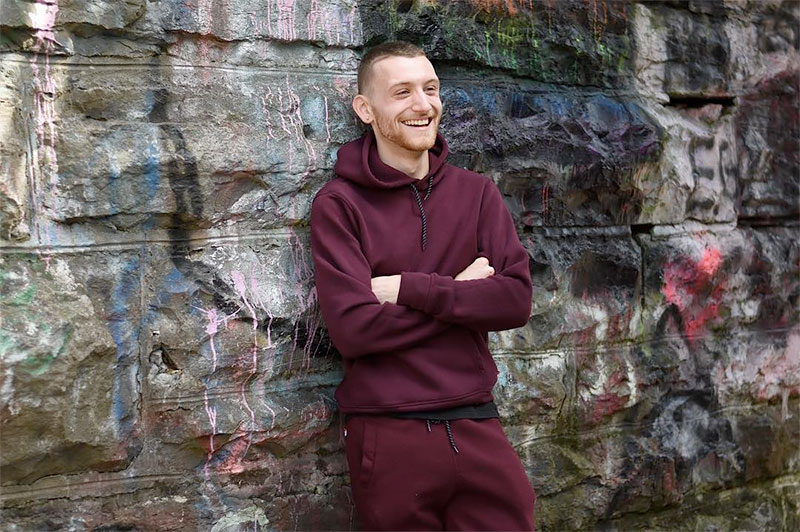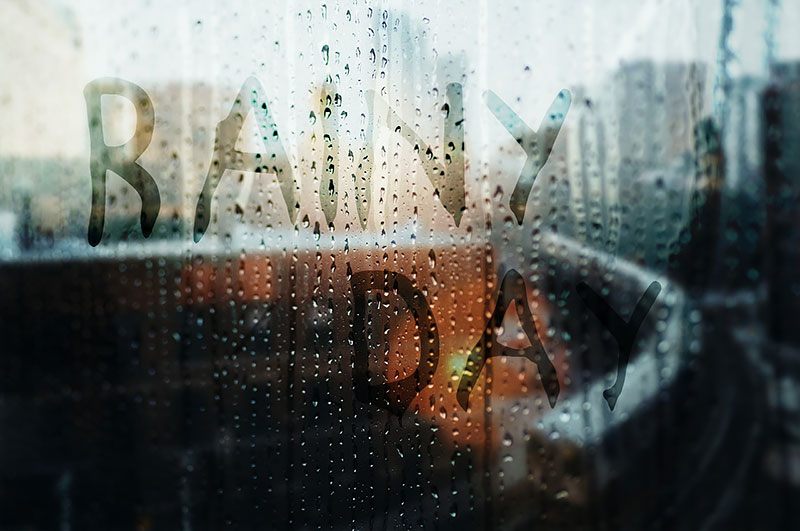A lot of photographers are absolutely horrified of bad weather, especially when it comes to rain. And that's reasonable if you think about such things as water getting into your camera and possibly breaking something in it.
But, contrary to popular belief, rainy weather actually gives you some great opportunities to add more cool shots to your portfolio. Here are seven things you can photograph on rainy days.
1. Reflections
Even though you might be used to photographing reflections from lakes or ponds during regular days, rainy weather gives you a chance to use other reflective surfaces for variety. Use puddles and other water on the streets to capture some great reflections.
One of the biggest advantages of reflections is their ability to lighten up the environment. For example, if it's nighttime, the power of one source of light such as a streetlamp can be amplified by the reflections in the water.
Moreover, trying to catch crystal-clear reflections is not a must either. In order to spice up your composition and add some unique texture, try to capture the ripples on the surface of the water. The result will be more abstract than a mirrored image.
2. Raindrops
Raindrops with all their beauty are often overlooked even though they are quite an obvious subject for a photo shoot. You can blur the falling rain with slow shutter speed, freeze the motion of a falling raindrop, or incorporate raindrops into your images in other ways.
The two most popular ways used for raindrops are:
- Macro Shots of Raindrops: If you search online, you will find extremely photogenic shots of raindrops up close. Find drops of water on leaves, spider webs, and stalks of grass. Get up close and make some amazing macro images. If you have a good camera, you may even try to capture tiny reflections inside of pooling raindrops which will allow you to capture the world around you inside a droplet.
- Rain In Motion: This is a lot harder than making macro shots of raindrops, but the results are totally worth it. Use a tripod and a fast shutter speed to freeze the falling rain. The best place to start is to use a shutter speed of about 1/1000 seconds, but slowing it down to around 1/125 can result in streaked droplets or drops disappearing completely. In any case, it's best to experiment with different shutter speeds to find out what's best for you. Also, try using a powered down flash to lighten up the raindrops.
3. Splashes of Color
Brightly colored elements can be incorporated very well into your shots in order to brighten up your images when the skies are dark. This can be a brightly colored fence, a red barn in the distance, or colorful autumn foliage.
Alternatively, you can look for smaller details such as a flower in the rain, some fallen leaves, forest mushrooms, or a rain-dappled berry. They can significantly improve the uniqueness of your photographs by adding a splash of color that would contrast with the gray elements in a beautiful way.
If you really want to go out of your way to make stunning shots, you can take some mundane strikingly colorful objects and place them in a plain, gray urban environment after the rain. Your images will look surreal and authentic.
4. Glossy Details
Something that cannot be found during sunny weather is that beautiful glossy sheen that appears to cover everything right after the freshly fallen rain. It saturates the colors and helps everyday subjects come to life.
Look closely and you will see that everything from the forest to the ground to the leaves to the rocks has taken on a new kind of life. It seems like everything has suddenly livened up and is only waiting for you to take a picture of it.
In order to help you cut through some of the glare reflecting off of the surfaces while photographing, bring along a polarizing filter. You can also combine the magic of reflections with photography focused on capturing the glossy details.
5. Waterfalls
While being photogenic even during normal weather, waterfalls run fuller during rainstorms providing you with a unique opportunity to capture the wild, rushing waters. Moreover, some waterfalls that have unusually-colored floors or banks (with sediment ranging from bright red to orange to brown colors) may appear to be of different colors as the silt and mud are being stirred up by the raging waters.
The perfect shutter speed to blur the water and make it silky smooth is probably something around 1/8 of a second to 2 seconds. In addition to that, consider bringing a neutral density (ND) filter which will help you filter out some of the light during longer exposures. When you happen to be in the right place nearby the waterfall, remember to stay safe as the rocks may be slippery and the water more powerful than in normal weather.
6. Splashing Water
Splashing water can be found in abundance when it rains. For example, rivers tend to run wild. There's also the splash of raindrops hitting a puddle. Capturing such movement of raindrops will give you even more amazing shots for your portfolio.
When taking pictures of splashing water, remember to use fast shutter speed to freeze the raindrops in action. Or, on the contrary, use a slow speed to blur the movement. The most important thing to keep in mind is that you mustn't be afraid to experiment with the different shutter speeds in order to achieve what you want and get the images you are looking for.
7. Mist
Bad weather is often accompanied by mists or fogs. These provide you with a rare opportunity to test your skills and make shots of a natural fog rather than using an artificial one so popular during photoshoots nowadays.
A mist can always add a mysterious mood to your images. You may even be able to capture some otherworldly or dramatic photos as mists are perceived as something not commonly seen in urban areas (of course, it's not the case everywhere, but still).
One thing to keep in mind is your likelihood of making a good shot during different times of the day. For instance, if you are out in the morning or late afternoon, your chances increase dramatically.
Conclusion
To sum up, bad weather does not necessarily mean that you must stay at home and wait for it to pass. Instead, get your camera and go outside to make some amazing photographs for your portfolio. It will show that you are a true professional and are able to work in different conditions.
Frank Hamilton has been working as a translator at translation service
TheWordPoint and as a writer at
Writersquad. He also loves traveling and speaks Spanish, French, German and English.


